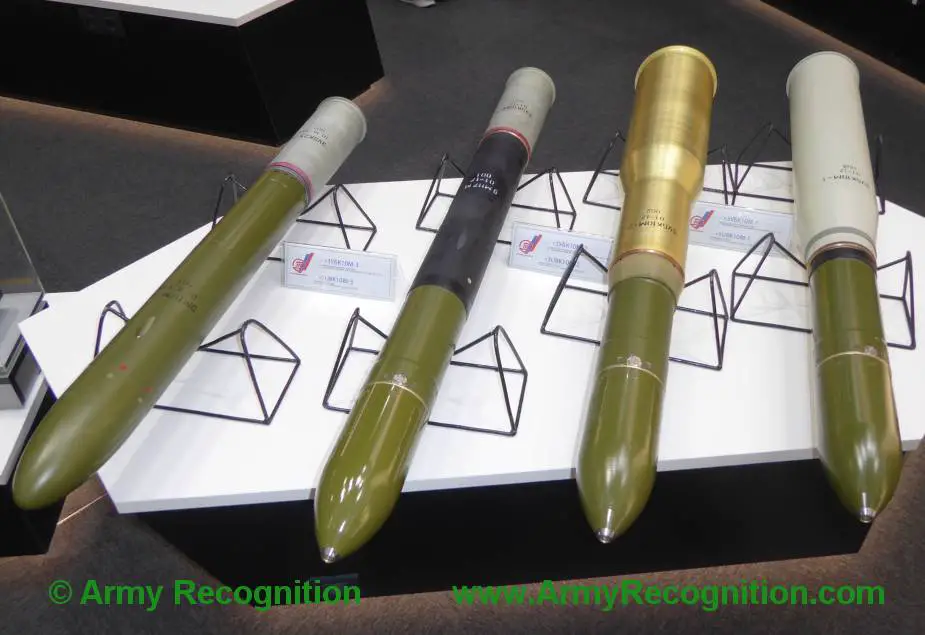Design and production of munitions are priority for Russian armed forces - Part 3
Major changes are visible in munitions design. In the first two decades of the 21st century, they were not a priority of the arms program and received little finances. However, combat actions in Syria clearly demonstrated the acute necessity to upgrade and design new-generation munitions for various weapons. A quick fulfilment of the task is impeded by deteriorating skills of designers and technologists.
Follow Army Recognition on Google News at this link

Combat actions in Syria clearly demonstrated the acute necessity to upgrade and design new-generation munitions for various weapons. (Picture source: Army Recognition)
Previously created facilities in the munitions industry were excessive and do not meet modern requirements. They occupy immense territories to provide explosion-safe distance between production workshops. Modern automatic and technologically re-equipped facilities are necessary to close major gaps. It is necessary to acquire foreign technologies and equipment and copy them in the Russian production base.
A leading trend in munitions development in the past decades is a continued increase in the rate of fire. In the 20th century, both offensive and defensive weapons increased the firing speed and it continues to grow in the 21st century. The arms procurement order in the industry has been growing of late, as the demand for gunpowder and procurement of munitions is on the rise to replenish stocks of arsenals and fulfil the 2027 arms program.
The reform of the industry and increased production depend on the prudent and rational division of the arms procurement order among enterprises. Priority guidelines of munitions industry development include: the creation of an optimal image of the industry, which provides for the fulfilment of predicted volume of combat missions by formations and groups of troops on the basis of guaranteed sufficiency of production capacities; the formation of an innovative infrastructure to develop regional integrated centers of science, technologies and production, technological clusters; completion of reform and increased effectiveness of integrated structures in the industry with rational location of enterprises engaged in munitions production; concentration of production, technological, and technical resources in the guidelines of cooperation in the industry to design and produce munitions and components; optimization of facilities, including diversification of excessive production capacities; technical and technological upgrade for the implementation of the arms program; considerable decrease of costs of batch production of various munitions (1.5-2 times rather than 15-20 percent); upgrade and development of high-tech civilian products to ensure their competitiveness and investment attractiveness; support of existing and creation of new special chemistry enterprises.
The fulfilment of the tasks will keep the Russian status of a country with a full cycle of munitions production and readiness of the munitions industry to fulfil the arms procurement order 100 percent and supply modern munitions for prospective arms. Producers of the arms procurement order should be optimal in composition and structured, and the demilitarized territories should be engaged in economy.
The industry can stabilize and sustainably develop due to a return to a tough state regulation. Joint-stock companies (they are a majority at present) should become government-owned and unite into a scientific and production amalgamation. The experience of reforms in the industry showed that floating of capital often resulted in bankruptcy and closure. Diversification to civilian output in private enterprises targets maximum profit and ignores mobilization readiness.
As a rule, the diversification does not ensure an accelerated launch of massive production of munitions, as it is unreal for joint-stock companies to do it in a period of threat and the time allowed by the military-political situation.
Near and midterm Priority tasks of the munitions industry include: systemic modernization of enterprises, priority use of new technologies in the design of munitions, their batch production for all types of weapons; preparation and holding of events to reform the munitions industry and diversify the released capacities; quality training of the personnel (the industry needs young skilled specialists); new equipment and fixed capital stock, including demothballing of mobilization readiness enterprises, which are often in a technical plight; improved safety of production of munitions and gunpowder. Increased military output and growing arms procurement order triggered greater risks related to the operation of worn-out equipment and decreased skills of the personnel.
© Copyright 2021 TASS / Army Recognition Group SPRL . All rights reserved. This material may not be published, broadcast, rewritten or redistributed.


























